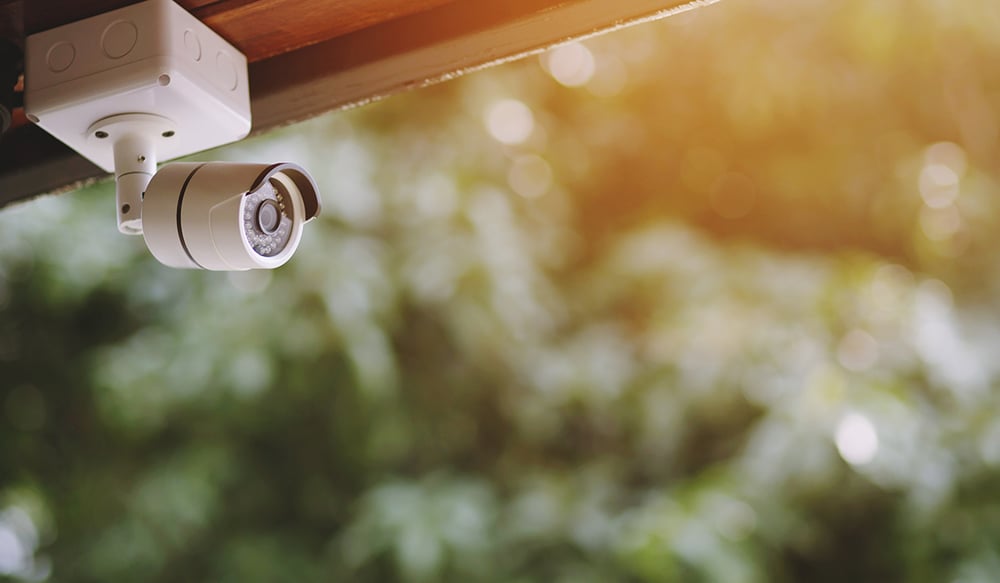1080p vs. 720p Security Cameras
Home Security Tips Security Cameras Budget Tips Commercial Security Systems Dec 27, 2022 9:21:49 AM General Security 5 min read

Editor’s Note: This blog post was originally published in February 2019 and has been revised to reflect industry updates.
Resolution is a top consideration when deciding between purchasing 1080p or 720p security cameras. While both are suitable for indoor or outdoor use, they differ in the level of detail and clarity for each model—and consequently, how well intruders or vandals would be effectively identified from their footage.
720p models are adequate for many users, and cost about the same as more sophisticated cameras. Those featuring 1080p require more storage and bandwidth, but also provide greater detail for not too much higher a price.
While either camera is a solid option, higher-resolution surveillance is the slightly better choice, if your budget permits.
The following is a helpful breakdown of some of the many advantages of 720p- and 1080p-resolution security cameras.
What Are 1080p & 720p Security Cameras?
720p models are adequate for many users, and cost about the same as more sophisticated cameras. Those featuring 1080p require more storage and bandwidth, but also provide greater detail for not too much higher a price.
It’s important to first understand resolution designations. These represent the vertical pixel (p) quantities—tiny dots of color—in recorded images. This affects how much a picture can be enlarged without sacrificing detail—the higher the resolution, the bigger the image.
1080p signifies high definition: 1920 pixels in width and 1080 in height, or a 16:9 widescreen aspect ratio. 720p cameras feature older technology, though legacy installations can be easily integrated with newer systems.
Differences Between 1080p & 720p Security Cameras
While 1080p doesn’t seem to provide much greater resolution than 720p, its total picture size actually contains twice as many pixels, since width increases proportionally as images become larger. This can help with better long-distance identification and recognition.
Every area to be monitored demands unique camera specifications, depending on size, shape, and other factors. Smaller, well-lit spaces with a clear field of view can be effectively covered by 720p systems, while larger spaces require an upgrade.

Camera Memory & Streaming
Higher resolution captures greater details, but also requires more memory. A one-hour, 1080p recording uses 675 megabytes (MB) of space, while the same video at 720p consumes only 288 MB.
It’s important to have enough storage to cover the full duration of when you’ll be away. If you regularly go on vacation, you’ll need enough memory card space to record at least one week of footage.
Real-time video streaming to a mobile device will be easier with 720p quality due to its lower bandwidth requirements. Most internet connections can easily stream at 1080p without issues, but a slowdown may cause lag with higher-resolution cameras.
Affordable Storage Space
Even when recording continuously for one week, a 1080p camera will consume only 113 gigabytes (GB) of space. Many modern cameras also have advanced features such as motion sensors and video analytics. Since these are activated only when movement is detected, they extend memory, storage, and battery life.
With cloud storage, some video systems might not even require a memory card. Remote video monitoring captures real-time footage accessible from any mobile device. Varying in price and plans, subscription-based cloud storage holds up to one month of space.
With the advent of cloud storage, some video systems might not even need a memory card. Remote video monitoring enables real-time recordings accessible from any mobile device.
Detail Level & Identification
Before selecting a security camera, consider its purpose: to identify or recognize intruders and occupants. The terms recognize and identify are industry standards regarding qualified image sizes.
Video requires a picture at least 20 pixels wide for a viewer to recognize someone from it. Depending on lighting conditions, a legitimate identification requires an image between 40 and 80 pixels.
Proximity & Image Resolution
A higher-resolution camera packs more pixels into an image, so it aids with recognition and identification at greater distances. 1080p footage, therefore, is better for deciphering identifications from longer ranges and bigger properties.
720p footage is high enough quality to identify someone looking directly at the lens from across an average-sized family room with good lighting. Real-life scenarios add another layer of complexity, posing the questions: What if the intruder isn’t looking directly at the camera? What if their face isn’t visible, but a small identifying characteristic is?
No specific system can capture every scene, however a higher-resolution security camera provides a slightly better chance of collecting important details. Stiffer competition has lowered the price of 1080p cameras comparable to 720p models. An upgrade could be worth the slightly higher cost.
Best Uses for 1080p & 720p Cameras
1080p cameras are best for recording larger images for longer time periods. Real-time video streaming is easier with 720p due to its lower bandwidth requirements. Depending on the area to be monitored, less cameras but featuring higher resolutions could be utilized. 1080p cameras can effectively safeguard residential yards, walkways, driveways, and more. They’re also ideal for surveilling commercial storefronts, parking lots, and internal employee areas.
Bullet and dome cameras can deter so-called porch pirates, intruders, and vandals. These are also suitable for monitoring employee productivity, capturing criminal activities, and ensuring public safety in commercial settings.
Closed-circuit television (CCTV) cameras and systems are additional options for critical surveillance of commercial businesses, schools, and public gatherings. This technology can also assist law enforcement with identifying and possibly apprehending potential perpetrators.
1080p cameras are best for recording larger images for longer time periods, and real-time video streaming will be easier with 720p quality due to lower bandwidth requirements.
Which Camera Is Best?
As outlined above, both cameras will provide surveillance, but the optimal model will depend on a number of factors, including size and specifics of the property or area to be monitored. While 720p cameras may suffice for smaller coverage zones, upgrading to a 1080p model may be worth it, since there’s a minimal price differential and it captures footage at a greater resolution.
If you’re still unsure, or have further questions regarding cost, clarity, or resolution, it’s best to consult with a reputable and experienced security provider such as General Security, for guidance.
General Security provides security cameras, motion detection, and smart technology solutions to protect your home and business. Request a free quote from us today!
